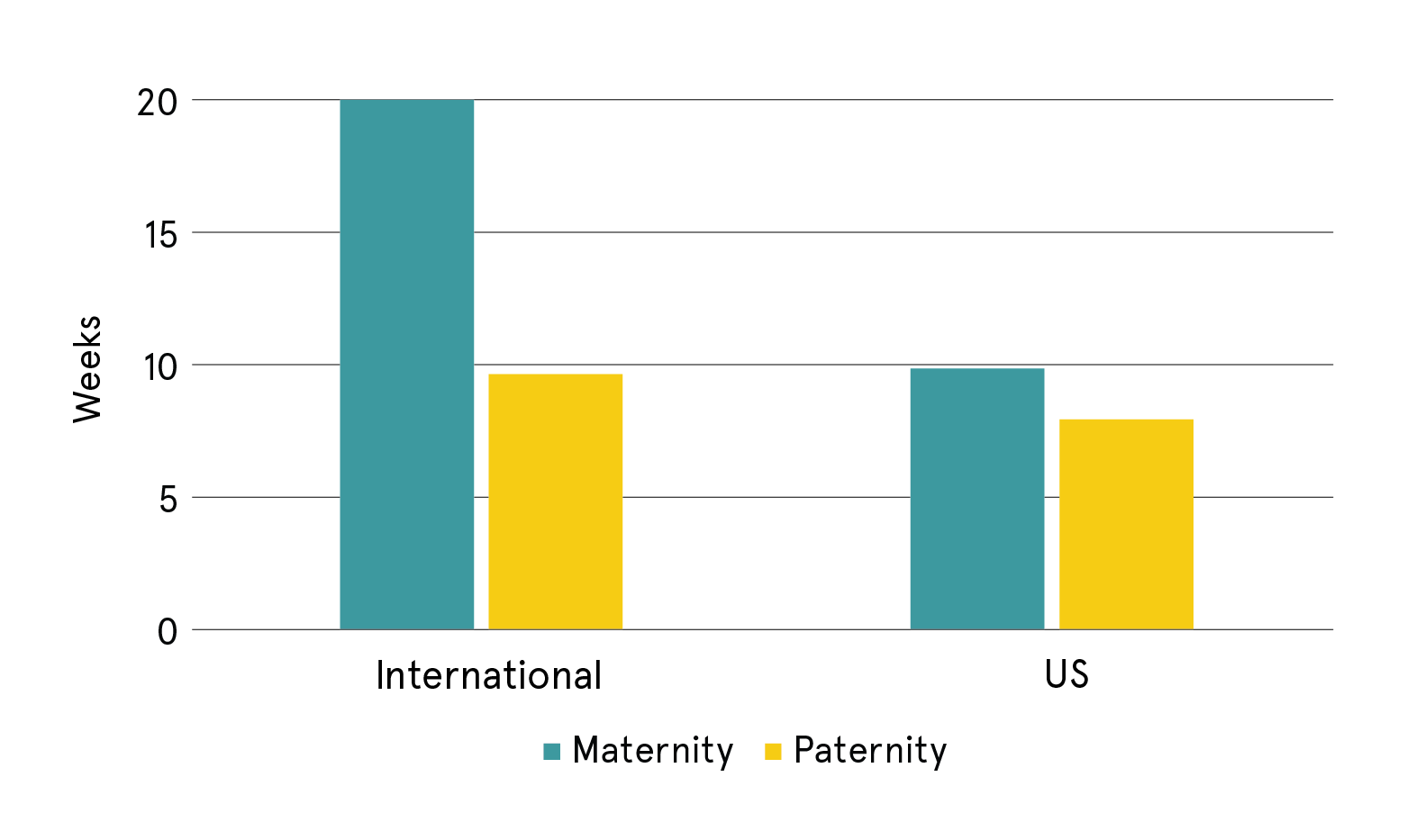ProAV: Are Women Fully Welcome?

By Peter Hansen and Joé Lloyd
AVIXA
So many of us have found our home here in the ProAV community. We’ve entered, been made to feel comfortable, developed professionally, even thrived. But not everyone shares this experience. As our data shows, women have not necessarily found their forever home in this industry. With underrepresentation at the forefront, possible bias and a deficit in advancement may be the consequence. Everyone deserves to feel welcomed, a level playing field and the opportunity for progress that is not yet equally available to all.
There’s a pure business motivation to addressing this differential experience issue: as covered in our recently published Macroeconomic Trends Analysis report, the need for employees far outstrips supply, leading to hiring and retention problems. For businesses facing these problems, extra attention to inclusion, advancement and parental leave can yield substantial returns.
This aligns with recently published research on how the tight pro AV labor market intersects with race; that effort showed how addressing unequal pay, advancement and inclusion can help companies better face their workforce difficulties. Gender merits focus just as much as race. Our data shows that women are even more underrepresented in our industry than non-white workers — in addition to facing the same sorts of pay and seniority shortfalls. This is another area where improving the treatment of a group can address a major business challenge and better our industry in the process.
Last year, we studied the gender pay gap in ProAV, finding that women earn between 79% and 89% compared to their male counterparts. To learn more about the gender pay gap — including why we present that range rather than a single number — check out the article here.
This year, we focus on other vital gender issues in ProAV: inclusion, advancement and parental leave. Work is more than the dollars of pay. We will certainly return to the gender pay gap — especially after more time has passed and more evolution is possible — but, for now, we seek to create a fuller picture of gender in our industry.
Are Women Welcome in ProAV?
Start with inclusion: Women are deeply underrepresented in ProAV. The percentage has increased, but women were still only 13% of InfoComm attendees in 2022. In our global salary survey, women represented just 9% of the respondent pool (6% outside the U.S. and 11% in the U.S. — see Figure 1). Part of the skew is a broader tech phenomenon, as roughly 15% of all U.S. engineers are women. But ProAV is shy even of that low bar.
Figure 1: Gender in ProAV by Region

How shy we are stands out when you crosscut by job categories. The technical roles are all below the industry average, with percentages ranging from 5% to 8% for engineers (6% to 10% in the U.S. alone). The overall industry percentage is propped up by the least technical categories, Sales/Marketing and Business Support (Figure 2). All the representation data adds up to one inescapable conclusion: Women are not as represented in ProAV as they are in other industries.
Figure 2: Gender in ProAV by Job Category

Can Women Advance in ProAV?
The data on gender by job category suggests one reason why women might be so dramatically underrepresented in ProAV. When it comes to advancement in ProAV, the glass ceiling appears to be alive and well. No category has a lower percentage of women than senior leadership — though it is close to the technician category. If a leadership team is all men, how well can it recruit, welcome and include women? If you are a woman planning your career — especially with ambitions of success and leadership — would an industry so empty of women in leadership appeal? Bringing women into senior positions is in businesses’ interests as well, as academic research has found gender diverse management teams produce better returns.
How Does Leave Factor In?
Parental leave is another contributor to the gap in inclusion and the advancement of women. Maternity leave is a benefit provided to the majority of full-time workers* (both in the U.S. and around the world), but it is far from a universal guarantee (Figure 3). Paternity leave is less common, with only about half of respondents worldwide reporting this benefit. Over half of non-U.S. respondents have it (57%), while less than half of U.S. respondents do (41%).
Figure 3: Frequency of Maternity and Paternity Leave by Geography

Quantity of leave extends the story beyond the binary of have/have not. Standards are high among non-U.S. respondents whose companies offer maternity leave, with an average of 20 weeks (Figure 4). The U.S. maternity leave average is much lower at roughly 10 weeks. Among the smaller portion that has paternity leave, average durations were lower. Outside the U.S., the duration fell by half compared to maternity leave (from 20 weeks to 10). The comparative drop was less in the U.S., but the 8-week paternity leave average for the U.S. was still less than the 10-week average in the rest of the world.
Figure 4: Average Weeks of Paternity and Maternity Leave Among Those Who Have It

The parental leave numbers add up to form two main conclusions: One is the shortfall on leave for mothers, as 25% of full-time respondents report having none at all, and the U.S. average duration is only 10 weeks. The second is the gap with paternity leave, which is both far less frequent and shorter. The maternity leave shortfall and paternity leave gap both pose challenges to women in AV.
The shortage of maternity leave has an obvious negative impact. For the subset of women who plan to become parents, it’s a sharp disincentive. No leave or meager leave is a strong push out the door for a talented woman who happens to also want kids.
The lack of paternity leave also has a profound, if less obvious, impact on women in AV. It is a hard reality that companies often dislike when a worker leaves their job for a long stretch of parental leave. When maternity leave outpaces paternity leave, that dislike turns into a gender bias. Companies may shy away from hiring or giving critical assignments to potential parents who are women out of fear of disruption from losing the worker to maternity leave. Offering equal paternity leave balances those scales.
Equal paternity leave (a.k.a. a unified parental leave plan) has other benefits as well: It’s a statement that a company stands for gender equality, respects non-traditional family structures and supports fathers being fathers. In an environment where company values impact worker recruitment and retention, the investment in improved parental leave can easily pay off.
A Bias to Dismiss
The initial leave is, of course, just the first chapter in the life of a working parent. Other biases influence later stages of parenting. As Pew Research reveals, men are seen as providers, relegating women to a more domestic role. This view is deeply anachronistic. Women are the primary breadwinners in over 40% of U.S. households with children (driven in large by single-parent households). As a result, mothers have the same provider motivation that fathers do. It’s past time to recognize the man/provider viewpoint as an outdated myth. No parent should be seen as less committed to their job only on the basis of their gender.
What Should Business Leaders Take Away?
As we covered last year, the gender pay gap is all too real in ProAV. Underrepresentation is another piece of the puzzle, with recruiting and internal welcoming both components to evaluate. Relatedly, promotion pathways need further thought, as the data suggests they are less open to women than they are to men. Parental leave is a fourth place to look. Maternity leave is available to most women, but not all, and not always in significant quantities. In addition, unevenness with paternity leave creates bias when companies hesitate to trust workers with more potential to take parental time off.
So many of us who have joined ProAV have found this industry an incredibly welcoming place. But numbers strongly suggest certain groups have a different experience. Women are deeply underrepresented in our industry — especially at the top. Today, ProAV faces major issues recruiting and retaining workers. Opportunity alert! Intentional consideration of the challenges women face in our industry is an area of alignment between alleviating the ProAV workforce issues and doing the right thing.
Additional Resources
You can find curated resources and examples of companies taking on these challenges here.
You can start your own journey with articles and videos such as:
- https://www.idealist.org/en/careers/pronouns-workplace-inclusivity
- https://www.cio.com/article/3633591/di-a-key-factor-in-increasing-project-roi.html
- https://www.mckinsey.com/featured-insights/leadership/how-to-accelerate-gender-diversity-on-boards
- https://www.bestcolleges.com/blog/barriers-for-women-in-stem/#scholarships-for-women-in-stem
*For parental leave, we confine analysis to full-time workers, as part-time workers commonly do not receive benefits.




